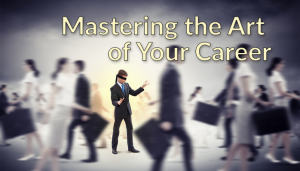It doesn’t matter what you do for a living — whether you work in medicine or retail, law or construction, whether you’re a software engineer or a writer — there’s an art and science to just about every career imaginable. Every profession has its scientific aspects, those more mechanical facets and rules and methods you absolutely must know to excel within your industry. However, these professions, no matter how dry, straightforward, or technical, also have their creative or artistic qualities.
This dichotomy is what makes every industry so diverse. It’s the reason no two professionals within the same industry are ever identical. These people might have been working at their careers for the same amount of time; maybe they went to similar schools and took similar classes; maybe they even work for the same company and have the same position. However, they’ll differentiate themselves in the ways they’ve applied creativity and intuitive insights to their jobs.
This idea is evident in our everyday lives and impacts us, as well. Think of doctors with the same specialty. If, say, all dentists or surgeons were the same by virtue of having identical skill sets and nothing more, it wouldn’t matter whom you visited to get that root canal or have that cancerous mole removed.. But it does matter, and you’ve got a preferred set of professionals you visit time and again to prove it.
A classic example of this idea, speaking of doctors, happened to one of my brothers. Some years back, he was having pain in his legs, so he went to an orthopedic surgeon. The doctor examined my brother and told him he needed surgery. That didn’t sound too pleasant, so I advised him to get a second opinion. We went to another orthopedic surgeon, same credentials, just as well known; she recommended exploratory surgery, which didn’t sound great, either. So I asked him to get one more opinion so he went to a third orthopedic surgeon, who took one look at him and asked if he always wore his belt around his hips in the same place. My brother replied yes. Then the doctor asked if it was always a leather belt? Again the answer was yes. So the doctor recommended my brother switch belts, replacing his leather one with a softer stretchy material. His pain vanished within a week.
Now, all the doctors had the same impressive credentials. They all knew the science of their specialties, but this third doctor was much better at creative problem solving.
When you’re training or going to school for a career — and it doesn’t matter if it’s high school, vocational school, college, or a doctoral program — you’re essentially being trained in the “science” of that field. That is, you’re getting a hard, factual, standardized education, based on data and a proven methodology. If you’re going to school for accounting, you’re getting the “science” of accounting. If you’re in med school, you’re being instructed in a set of hard skills, from diagnostics to the proper way to set a broken bone. If you’ve just started a job in the food industry, you’re being trained in the knowledge of the establishment and its menu, as well as the serving or preparation aspects of the job. In all these jobs and careers, you’re also being schooled in the best practices of your industry.
Even if you’re in a creative field, you still have to learn both the science and the art of your craft before you can become adept at it. Writers need to learn grammatical and syntactical convention but they also have to lean how to write something you feel everyone must read. Musicians need to learn scales and notation and instrumental technique, but they also need to learn how to touch the heart and soul of listeners if they want to be considered great.
So where does the “art” come into these fields?
The artistic aspects of a career are picked up by professionals through years of experience and another, more flexible, less standardized type of “education,” one of induction. The first method of becoming more creative within your career, that of learning creativity through personal and professional experience, is somewhat obvious — the longer you do something, the more intrinsic, less immediately noticeable traits of this pursuit will become apparent to you; you’ll become better at problem solving and thinking “outside the box.”
The second method, the nonstandard educational method of developing intuitive insights coupled with creativity, involves gleaning the best-kept secrets and most well honed, time honored methods, the knowledge and wisdom of your profession from other professionals. These should be people who’ve already distinguished themselves through their own creativity, people esteemed in your industry and admired by you and your peers. You might seek these people out, like a musician choosing to take lessons from one of his favorite players, or an entrepreneur asking the advice of someone who’s already established herself as a success in business. Or you might stumble into these people during the course of your life, like having a captivating, inspirational professor or being trained by a capable manager who knows the secrets to making your job fun and interesting.
You can learn the science of your job from books, manuals, and classroom lessons and know that you will be good at what you do — but you need to learn the art from the artists of your field if you’re going to become exceptional. This knowledge and wisdom transfer is key to a rewarding successful career. Not only does it provide professionals an essential balance of skills, it’s what keeps industries thriving and innovative. It’s what pushes us to compete with others by bettering ourselves and in doing so, to push our very professions forward.
©2015 Burrus Research, Inc. All Rights Reserved.






